Foreign Exchange Trading 102
Foreign Exchange Trading 102
So as promised I am compiling the second part and left hand of my trading strategy. Good ole Fundamental Analysis. Most definitions you will see talk about securities, but I trade forex so I will be using pairs. Investopedia gives us a great and succinct explanation of what fundamental analysis means "Fundamental analysis is a method of evaluating a security in an attempt to measure its intrinsic value, by examining related economic, financial and other qualitative and quantitative factors." Before I continue I think it is important that you read my previous article Foreign Exchange Trading 101 so you can understand a lot of the concepts I will be using to explain this strategy. By continuing reading I am making the assumption that you have read the previous article and I won't waste time explaining the jargon or concepts.
I want you to answer this question based on the previous article. It’s Thursday afternoon, USDJPY looks like this, and the candle is about to close. What should you do?"
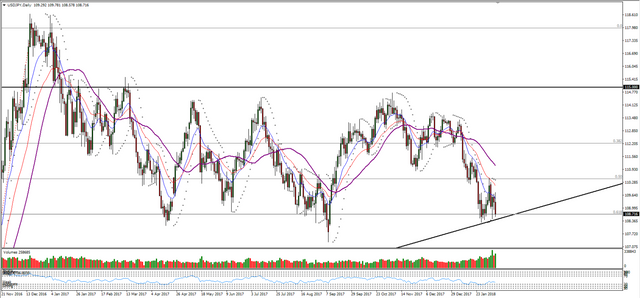
[source]
If you said that you would enter a long position with 2% risk and set your risk: reward ratio to at least 1:3 then I would say I'm glad you are paying attention, but at the end of this article maybe I can convince you otherwise. Young grasshopper you have much to learn!
Remember when I said that you should treat your trading strategy like plays in a playbook? Where this is where I'm coming from. You might get mixed signals and not all trades are black and white. It's important to learn how to analyze each trade and weigh your options so you can make an educated decision on what you should do. I'm going to break down each fundamental highlight that is telling me not to enter this trade.

Economic Spider Web
So remember these cause and effect statements okay? First, if oil is up then the cost of transportation goes up. If it becomes pricier to transport goods then consumer price index goes up. If consumer price index is up than consumption will go down. If consumption is down then the next Gross Domestic Product survey report will be lower than expected. If Gross Domestic Product goes down then the dollar index (greenback) will go down. If the dollar index goes down then gold will go up. Okay got it? Let me give you another scenario.
The second one is easier. If bitcoin drops 20% then the market plummets 50%. I like my markets like I like my women. Young, untamed, and lacking common sense.
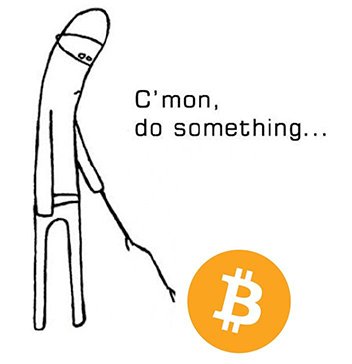
The most important factor that I pay attention to is Gross Domestic Product. GDP for short is the de facto economic structure that is used as a metric to gauge a countries economy. It consists of consumption + investments + government spending + net export. It's also the total monetary value of all goods produced in an economy within a certain time period usually monthly, quarterly, and annually. The exact definition of a recession is two consecutive months of negative GDP so if you were sweating bullets over the recent stock market correction you might want to wait before cashing out your 401k.
What does GDP have to do with Economic Spider Web? I always try to evaluate how any economic event would impact the united states GDP. Technically every country with a central banking system uses some form of GDP but thanks to the OPEC and Petrodollar agreements we are pretty much guaranteed that our economy is in everyone’s interest to remain stable. It is in America's best interest also to make sure that the Petrodollar agreements don't favor the euro instead. I could write a whole discussion on the petrodollar, but I'll keep on topic.
So, breaking down the GDP into 4 parts; consumption, investment, government spending, and net export. Consumption and investments are the two areas most likely to change. Government spending does not change much as its only purpose to inject the economy with buffer funds to cover lack of consumption. Net export doesn't change much because we already have established what our biggest import and exports are. Sure, tariff’s change some numbers around, but not nearly on a scale to be of major concern. Technically supply & demand are macro and microeconomic concepts, but they are just concepts meant to teach you how to understand the economy so I'm going to be lax ongoing in depth about them.
The biggest changes in consumption would be consumer price index, disposable income, employment, and government transfer programs. According to Consumption Web Institute "Consumption is the value of goods and services bought by people." Consumption has the largest contributing factor to GDP out of all 4 sectors and some traders only pay attention to consumption and ignore all other factors.
The consumer price index or CPI is a metric economist use to gauge the change in the price of goods & services. When firms are able to expand and hire more employees then the average consumer should have a higher income. We use two metrics to evaluate this; disposable income and employment (or unemployment). When we combine everything there are two outcomes that we boil everything down to. MPC + MPS which stands for marginal propensity to consume and marginal propensity to save. When adding both percentages together you get 1. This makes sense honestly. If you aren't consuming you are saving. It gets a lot more complicated than this, but for conceptual understanding of how everything fits together, this will suffice.
So we have the metrics, but we still don't know what to do with them. So far I have covered CPI, disposable income, employment, and MPC + MPS. I am going to tie these together to the central bankers now. We know how to spot market movers, but we still don't know what to do with them. Before I want to continue it's important to acknowledge what inflation is. Going back to supply and demand earlier when the supply doesn't change the only change in price then must be demand. That's exactly what moves the CPI. When consumers have more disposable income than before they are going to consume more which causes higher demand for consumable goods. Higher demand then brings the price of goods up thus increasing the CPI, and as I covered earlier we already know what happens when CPI increases.
Inflation is good until it's not. Consumption in this economy is what keeps the capitalist machine turning, but sometimes the machines run a little too hot and you gotta let her cool off a bit before she breaks. That is exactly what happened in the 1920's during the gilded age. Your great grandma or some shit decided that she hated the next generation and kept buying and buying. Then some idiot decided that he was going to create a more restricted monetary policy because when your car starts to die the best thing to do is to siphon the gas out of it. Makes sense right? That's my half-ass description of the Great Depression so ya know... There's that. Not a very good first impression on the central banking system.
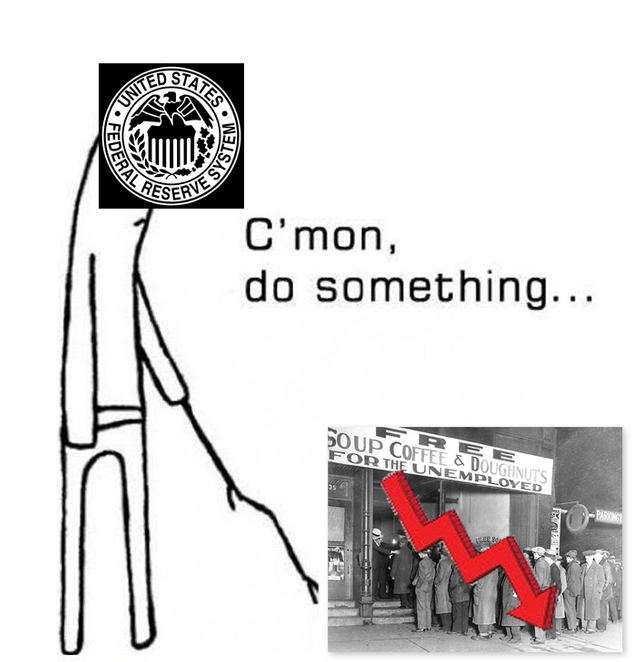
Now that we know the dangers of inflation what do we make of it? Well after the Great Depression our Federal Reserve luckily got their shit together and create monetary and fiscal policy standards. I might make a Foreign Exchange 202 that explains in depth federal reserve policies, but the big one you need to worry about is interest rates. When the federal reserve sees huge inflation then it raised interest rates to cool it off. Higher interest rates from the banks mean that the firms are not going to get as much "free money" when they want to expand. Since the firms are less likely to receive funds they start to downsize and that reflects on the employees who now are less likely to consume. Their MPC goes down and their MPS goes up. We can also use Phillip's Curve to evaluate this inverse correlation. The market moves in cycles between higher inflation and lower inflation. We use inflation as the metric to find out if a country is expanding or not.

So can we talk about Pepe Silvia? Sweet. We now know how everything is connected in our economic spider web. If you poke one part of the web the rest of it moves. It's like dropping a stone in the water and watching the ripples form. So going back to USDJPY how did I make the analysis that it was going to fake out? Well there are a couple of different charts that told me. Mother market will speak to you if you learn to stop yelling lambo and moon all the time. Damn amateurs...
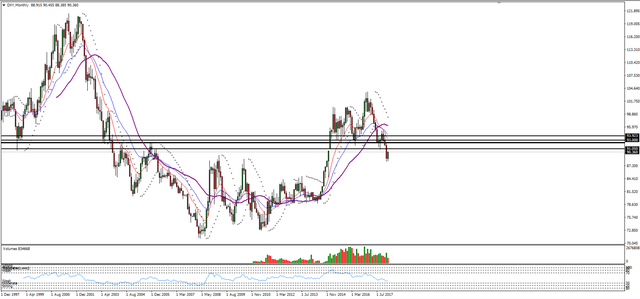
[source]
So this is the dollar index currently. Since USDJPY is a pair we want to evaluate how likely it is that USD will be greater or lower than JPY. From this graph we can tell that the dollar is going through a bear market right now so when the dollar index drops so does the USDJPY. That dead cat bounce from the 0.618 Fibonacci line was just a minor correction. I was able to tell because the price didn't shoot up past the 0.50 Fibonacci level. I thought it was odd that it rejected so easily.
I mean this really does make sense. After the Great Recession of '08 we pumped shit tons of money into the economy through Quantitative Easing. Remember how Supply and Demand works? Probably not because I didn't explain it... Well I am going to assume you're smart and know how to draw Keynesian cross. If the supply of something drastically jumps up then the power of it drops. Usually it's price, but in this case it's the dollar index. During inflationary periods we will see the dollar index drop. We want to make it easier for firms to get loans because then they can still hire employees and we don't have to worry about lack of consumption. There has been talks of the federal reserve changing policy around and implement stricter policies which you can definitely see in the end of 2017. Over all I think they are wanting inflation to boost up higher before deciding to increase interest rates this march.
So in the meantime inflation is going to run a little longer to make sure the firms are fat and the employees aren't going to eat shit when we start to let the economy cool off. I'll be interested in March to see what the fed decides to do with interest rates. Moving the economy around is hopefully a slow process. I hope by the end of this article you are a little more farmiliar with how the central bank works and certain areas of the economy that you should focus on.
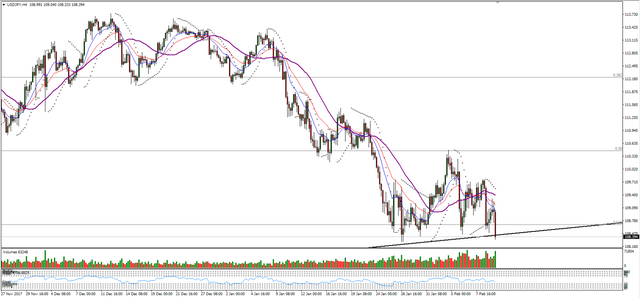
[source]
Great article! Lot's of good information!
Thanks I appreciate it!